NENDO-MICHI of JIN KATAGIRI ~NIPPON local the soul of clay~ vol. 5
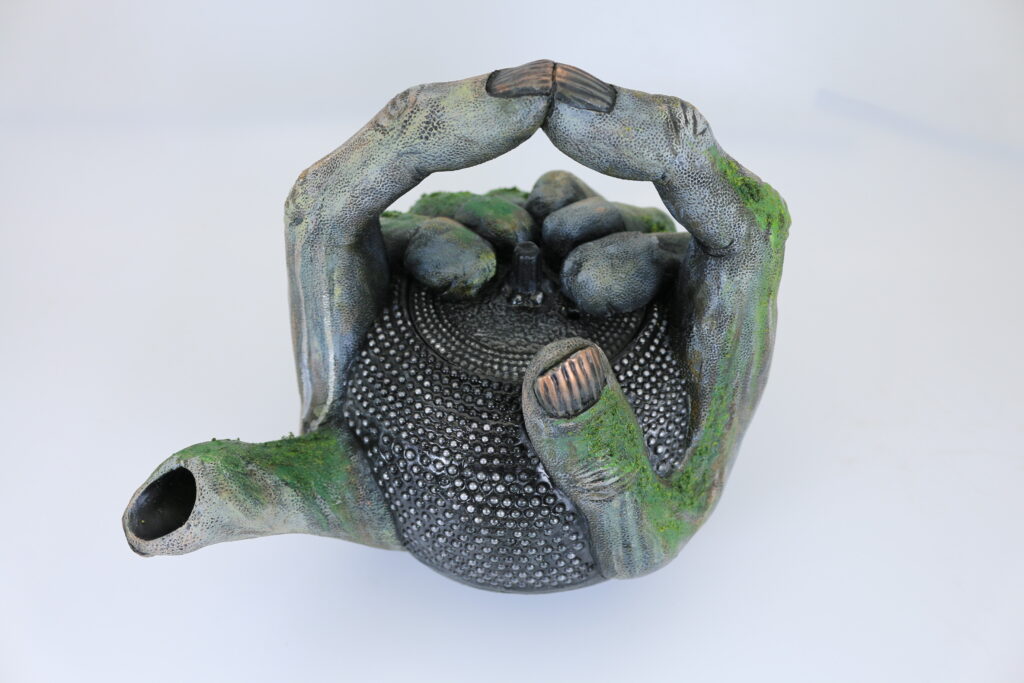
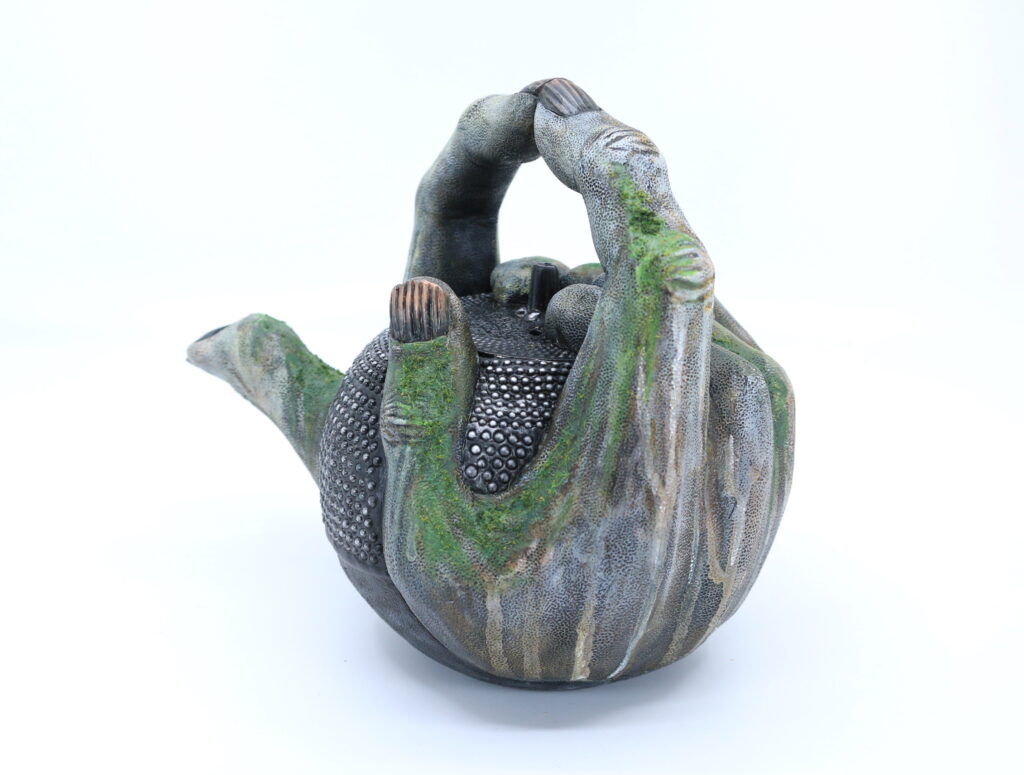
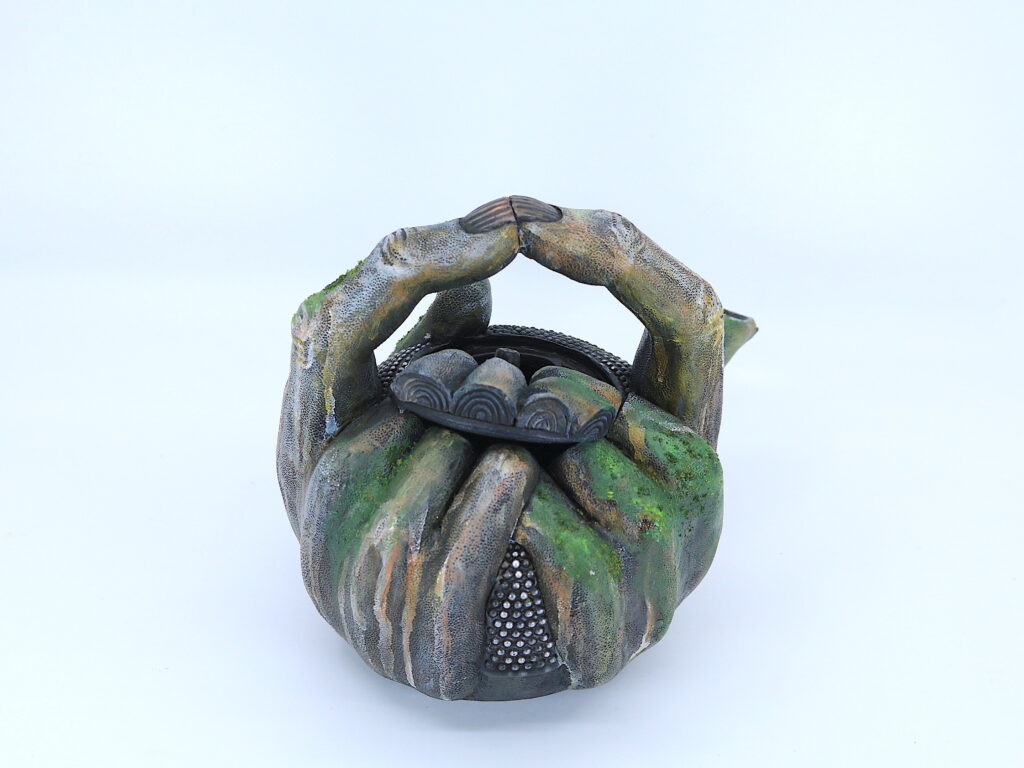
法量:縦×幅×奥行=170×190×144(mm)
材料:エポキシパテ、スカルピー、鉄球、ボールチェーン
Legal amount: height x width x length = 170 x 190 x 144 (mm)
Materials: Epoxy putty, sculpey, iron ball, ball chain
岩手県のご当地ヒーロー『ガンライザーNEO』に出演させていただいた時に、『岩手』の由来は、文字通り“岩の手“から来てることを知ってとても驚きました。また、演じたのが南部鉄器職人だったので、何箇所かの工房で撮影した時に「いつか南部鉄瓶は作りたいな〜」と思っていました。
When I appeared in the local hero of Iwate Prefecture, “Ganrizer NEO,” I was very surprised to learn that the name “Iwate” literally comes from the word “rock hand.
Also, since I was playing a Nanbu ironware craftsman, I thought “I want to make a Nanbu Tetsubin someday” when I was filming in several workshops.
*Nanbu Tetsubin : A cast iron kettle made with the skill of Nanbu tekki (ironware)
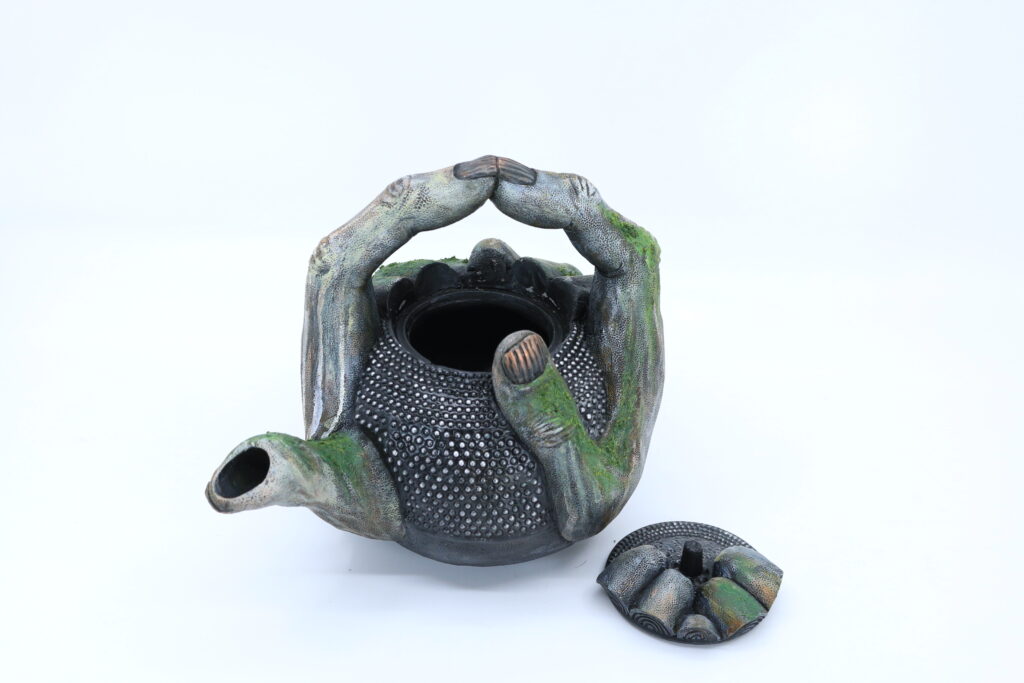
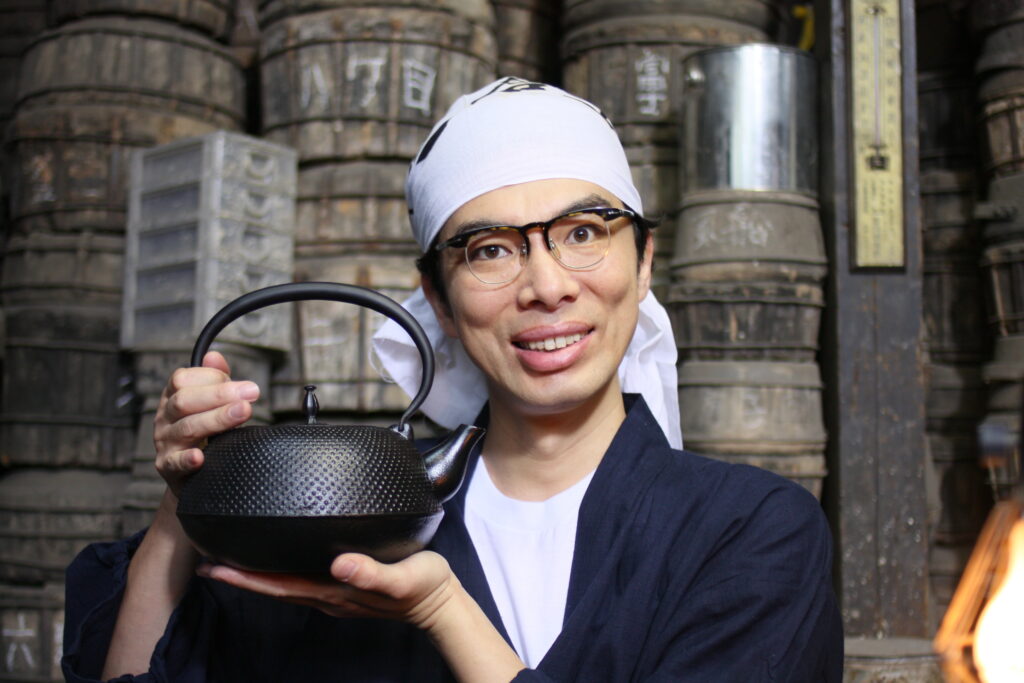
なので今回はシンプルに、「岩の手の鉄瓶にしょう!」とアイデアが思い浮かんでホッとしたのですが、「”手”→“やかん(鉄瓶)”ってなんかあったなぁ…。あ!影絵だ!」と、やかんの影絵を思い出しました。「これだ!」と思ったのですが、”平面で見せる影絵のやかん”を”立体のやかん”、に落とし込む作業が、難しかった…。
So this time, I decided to keep it simple and make a tetsubin with a rock hand. I was relieved when the idea came to me, but then I thought, “There’s something about ‘hand’ and ‘kettle’…”. Oh! Shadowgraph! I remembered the shadowgraph of a kettle.
I thought, “That’s it!” However, it was difficult to make a “kettle of shadowgraph” into a “three-dimensional kettle.
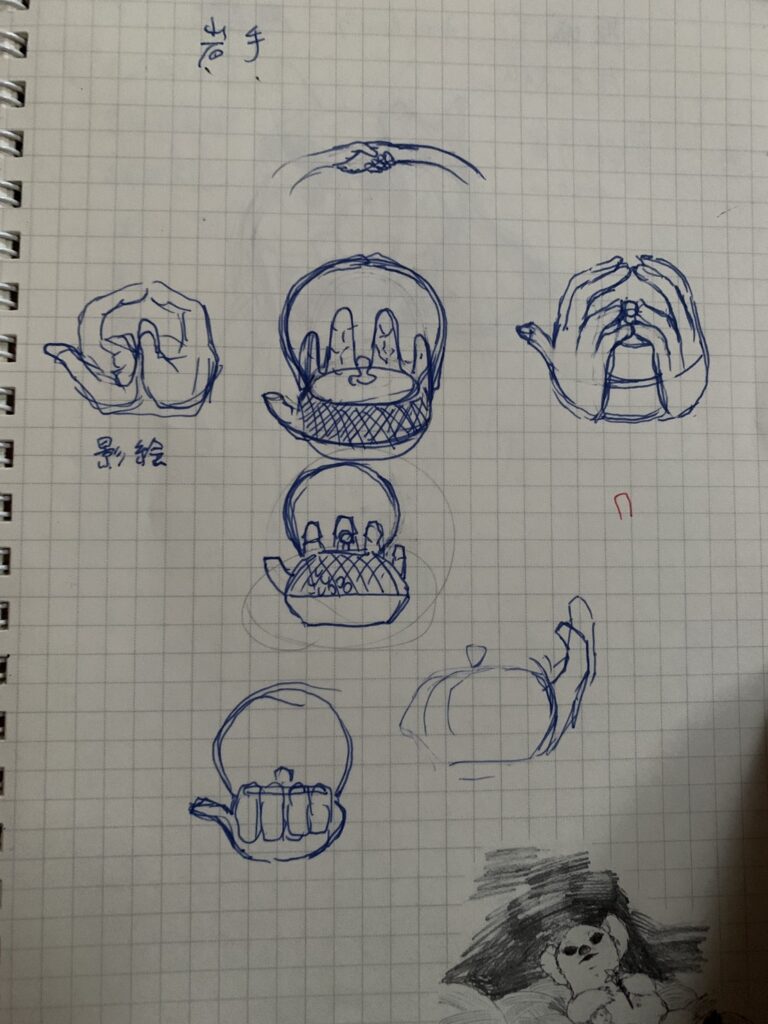
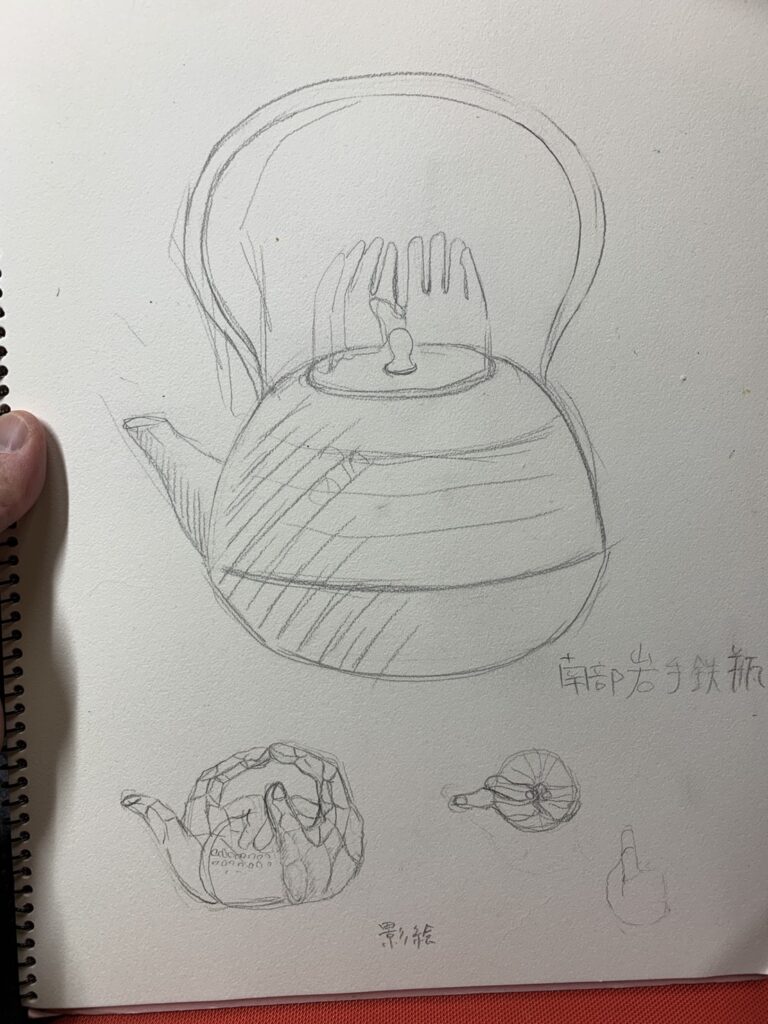
とりあえず、ペットボトルを芯にしてパテを盛り、フタは家にあった南部鉄瓶の急須のフタを乗せました。そこに指を一本ずつ造形していくことに。人差し指は”取手”、左手の親指は”注ぎ口”、まではすんなり決まったのですが、影絵では右手の親指が”フタの持ち手”になるのが、どうやってもラインが繋がらない。さらに中指から子指は、反対側になってしまうので、どうやっても指の本数が足りません。なので、”影絵にした時に、やかんに見える”ルールに変更。岩のテクスチャーをイメージして、粘土にエイの皮を押し付けました。前回のイワキカタギリリュウの逆の凹凸です。指のない部分には南部鉄瓶独特の『丸アラレ』という模様を入れました。本来は鋳型に丸棒を押し付けて表現する丸アラレなのですが、凸凹が逆になるので、鉄球とボールチェーンで再現しました。
For the time being, I used a plastic bottle as a core and put putty on it, and for the lid, I put a Nanbu tetsubin teapot lid that I had at home. Then, I decided to sculpt the fingers one by one.I could easily decide that the index finger would be the “handle” and the left thumb would be the “spout,” but in the shadowgraph, the right thumb would be the “handle of the lid,” and there was no way to connect the lines. In addition, the middle finger and the baby finger are on the opposite side of the screen, so no matter how I tried, there were not enough fingers. So I changed the rule to “it looks like a kettle when you make a shadowgraph”. I pressed the skin of a stingray onto the clay to give it the texture of a rock. This is the opposite of the previous work, Iwaki saurus katagiri. On the parts where there are no fingers, I added a pattern called ” Maru Arare,” which is unique to Nambu tetsubin. Originally, Maru Arare was expressed by pressing a round bar into a mold, but since the convexity was reversed, I used an iron ball and a ball chain.
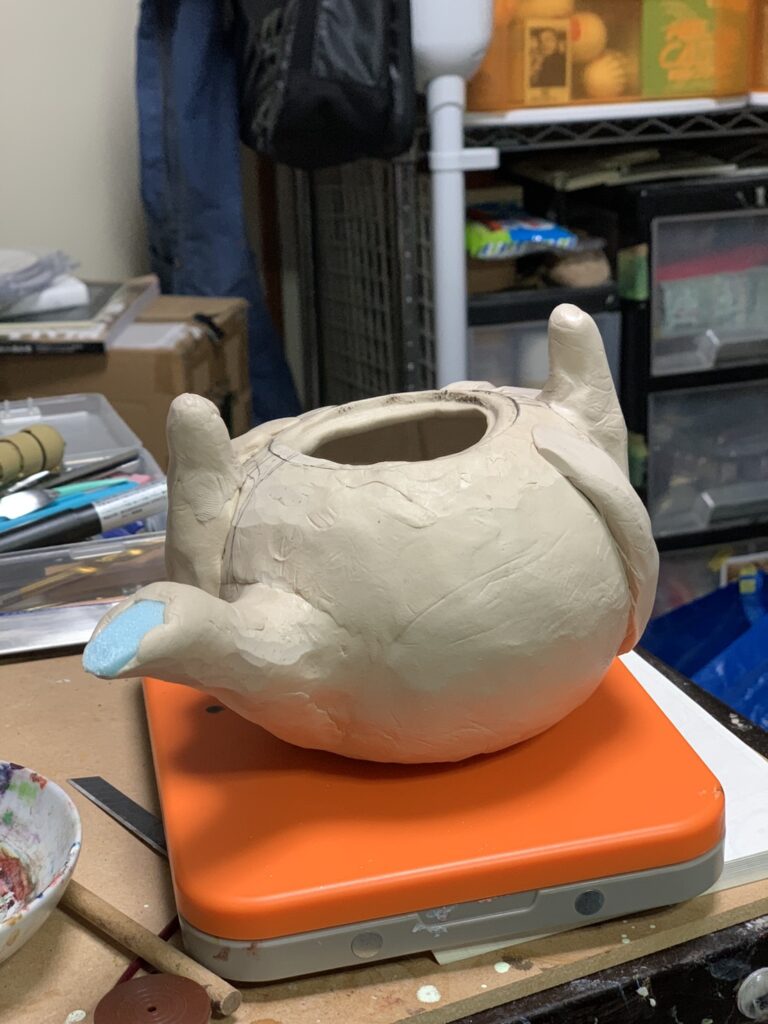
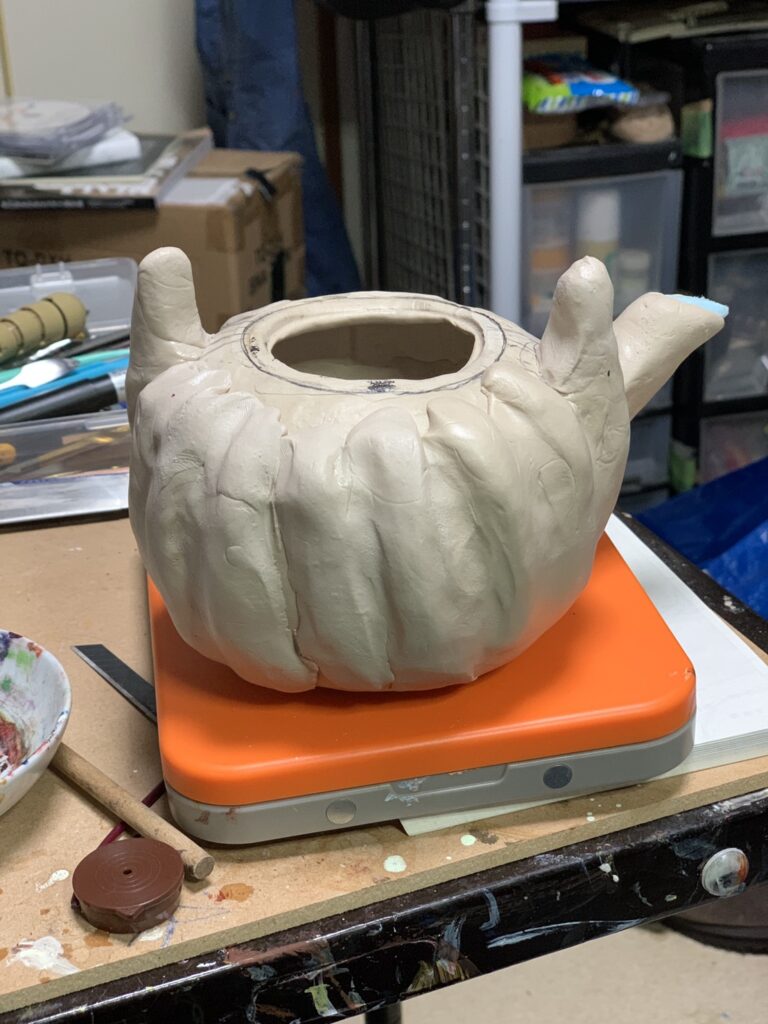
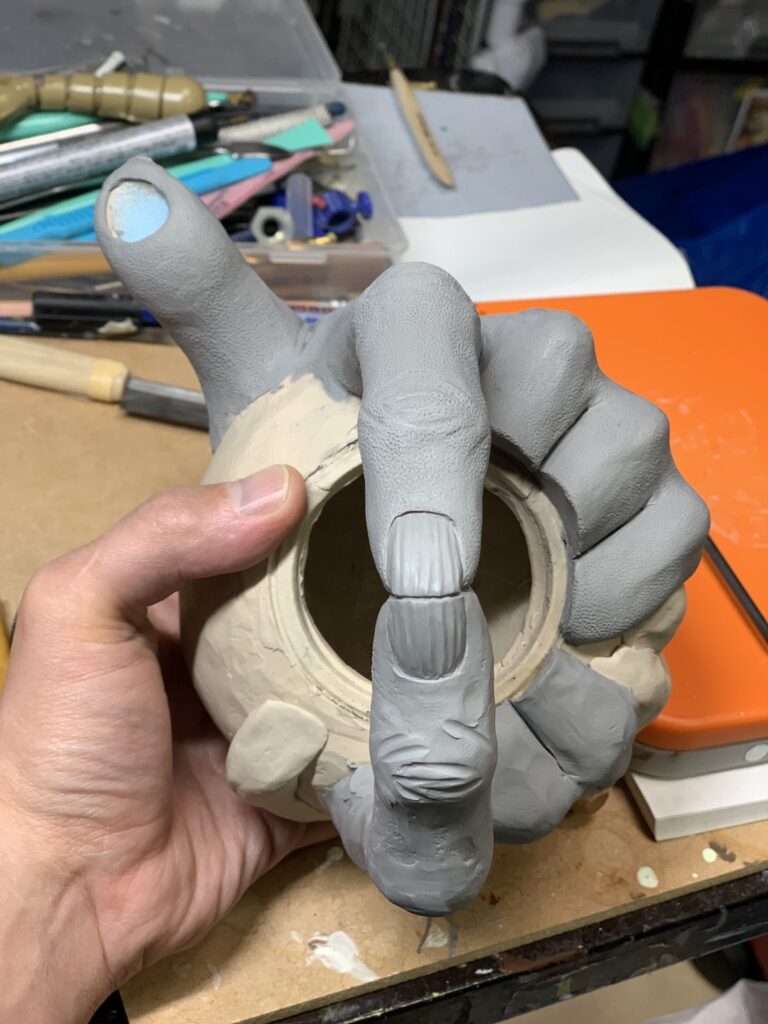
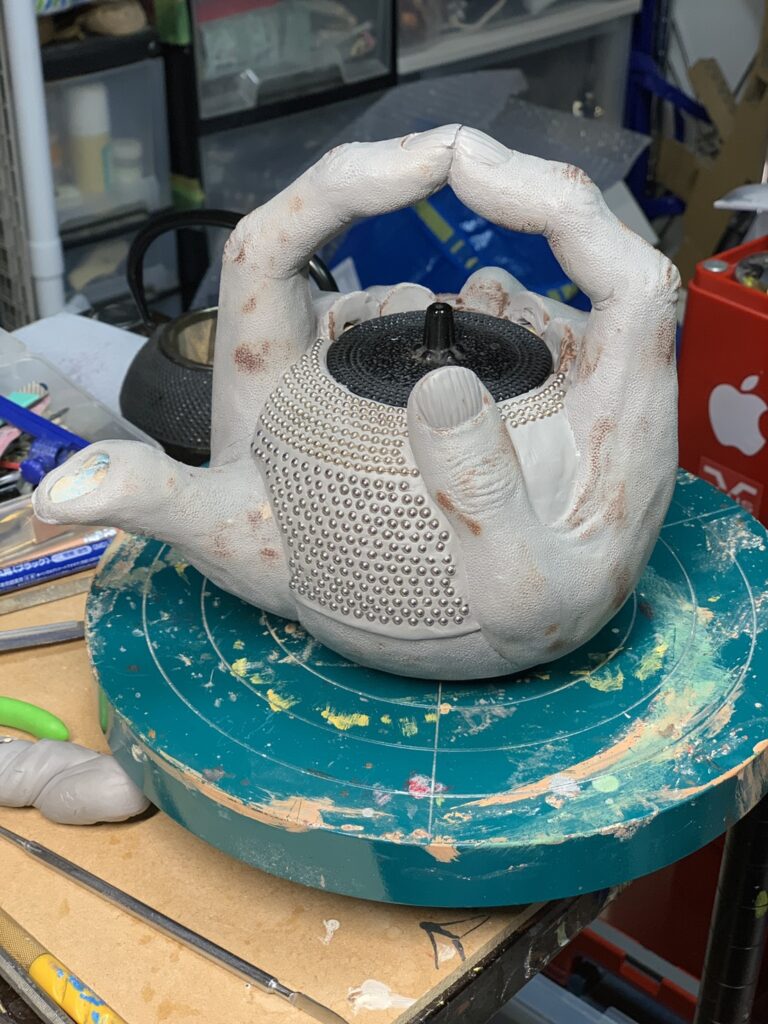
そして、楽しい色塗り…。これまた難航。そもそも『岩』ってどんな色? 最初はグレーをベースに汚していけばいいかな〜?ぐらいの感じだったのですが、『岩』を検索すると様々な色の岩が出てきて、雨垂れの跡や、木目みたいな岩の模様、ヒビが入ってたり、コケが生えていたり、太い縄が縛ってあったり、と、ここで相当迷いました。”キレイに汚す”って難しい。でも楽しかったです。
そして我が家には、蓋のない鉄瓶が余ってます…。
And the fun coloring…. This was another difficult task. First of all, what kind of color is “rock”? At first, I thought I should use gray as a base color and stain it. But when I searched for the word “rock,” I found rocks in various colors, with marks from dripping rain, patterns on the rocks that looked like wood grain, cracks, moss, and thick ropes tied around them. It’s hard to get it “beautifully dirty”. But it was fun.
And we have an extra tetsubin without a lid….
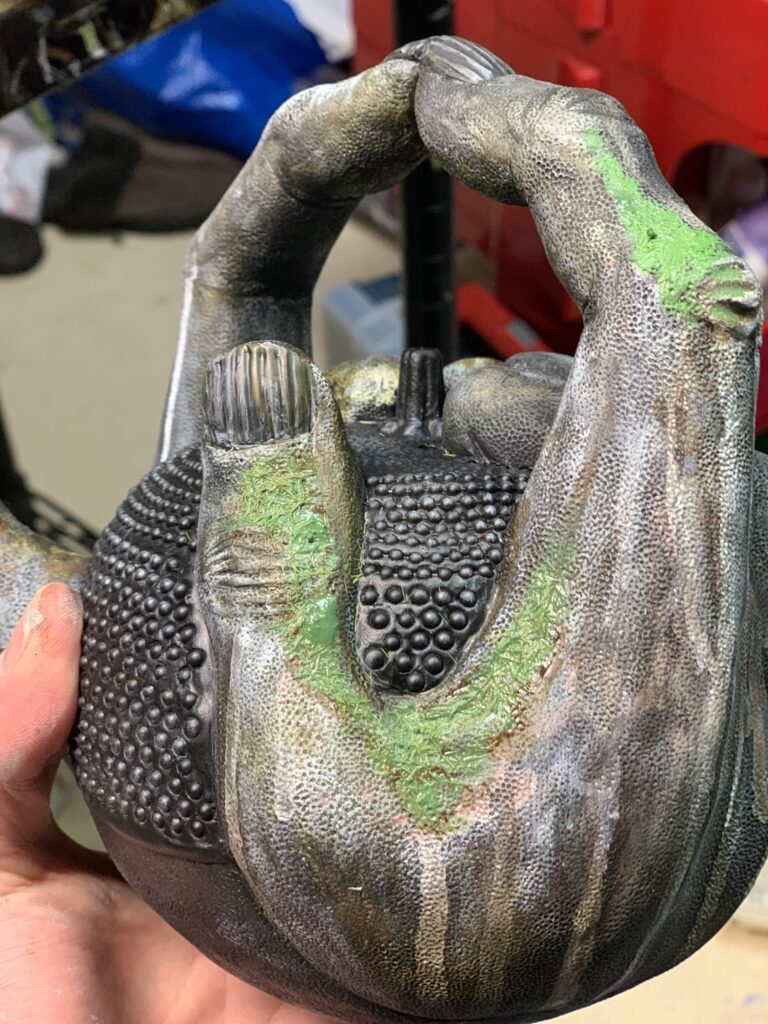
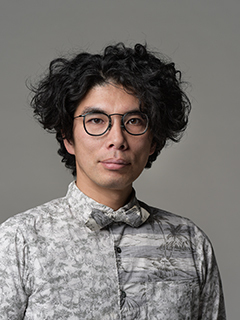
片桐 仁
1973年11月27日生まれ / 埼玉県出身 / 多摩美術大学卒業
ドラマを中心に舞台、映画、ラジオなどで活躍中。近年の主な出演作は「99.9%-刑事専門弁護士-」(TBS)、「あなたの番です」(NTV)、「NHK 連続テレビ小説 エール」(NHK)などがある。
俳優業の傍ら粘土創作活動も行い、2016年から2018年までは「片桐仁不条理アート粘土作品展 ギリ展」にて全国ツアーを開催。2019年は初の海外個展を台湾で開催している。
Jin Katagiri
Born November 27, 1973 / Born in Saitama Prefecture / Graduated from Tama Art University
Active in the stage, movies, radio, etc., mainly in TV dramas series. Major appearances in recent years include “99.9% -Criminal Lawyer-” (TBS), “Your Turn to Kill” (NTV), and “NHK Morning drama series Yell” (NHK).
In addition to acting, he also creates clay, and from 2016 to 2018 he held a national tour at the “Jin Katagiri Absurdity Clay Art Exhibit Giri Ten.” In 2019, he is holding his first overseas solo exhibition in Taiwan.
岩手県は東北地方の沿岸部に位置しています。南北に約120km続く細長い北上盆地と海岸部以外は山地や丘陵地が多く、緑豊かな県である。大自然を堪能できる観光名所や2つの世界文化遺産も人気のスポットです。その一つは南部の平泉町にあり、中尊寺、毛越寺、観自在王院跡、無量光院跡、金鶏山の5つが『平泉―仏国土(浄土)を表す建築・庭園及び考古学的遺跡群―』として世界遺産登録されています。
また、南東部の釜石市にある日本最古の洋式高炉跡である橋野鉄鉱山も橋野鉄鉱山(橋野高炉跡及び関連遺跡)を含む「明治日本の産業革命遺産 製鉄・製鋼,造船,石炭産業」として登録されています。
Iwate Prefecture is located in the coastal area of the Tohoku region.Iwate Prefecture is located in the coastal area of the Tohoku region. Except for the Kitakami Basin, which is long and narrow and stretches about 120 km from north to south, and the coastal areas, the prefecture is rich in greenery with many mountains and hills.It is also a popular spot for tourists to enjoy nature and two World Cultural Heritage sites. One of them is in the southern town of Hiraizumi, where Chūson-ji,Mōtsū-ji,Kanjizaiōin Ato, Muryōkōin Ato and Mt. Mt. Kinkeisan are registered as World Heritage sites called “Hiraizumi – Temples, Gardens and Archaeological Sites Representing the Buddhist Pure Land -”
Hashino Iron Mining and Smelting Site in Kamaishi City in the southeast part of the city, which is the site of Japan’s oldest Western-style blast furnace, is also registered as a UNESCO World Heritage Site for being a component site of “Sites of Japan’s Meiji Industrial Revolution: Iron and Steel, Shipbuilding and Coal Mining.”
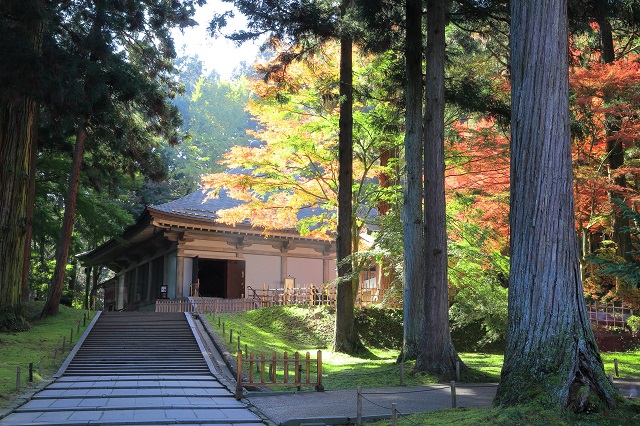
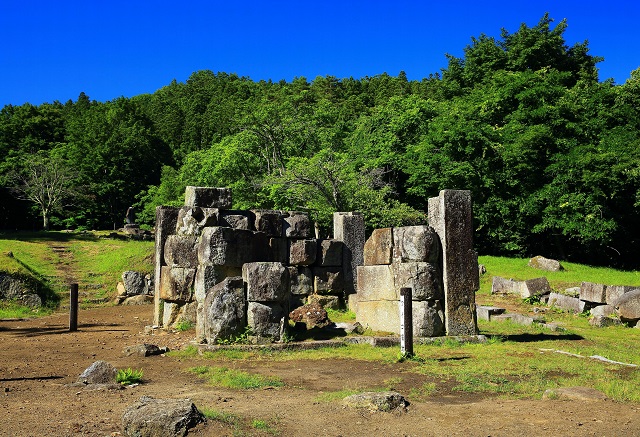
岩手の名前の由来は諸説あるそうですが、今回は「岩の手」が由来となったお話をご紹介します。
昔、岩手山が噴火したときに飛んできたといわれる石が「三ツ石様」と呼ばれて人々の信仰を集めていました。この頃、この地域で羅刹鬼(らせつき)という鬼が里人や旅人に悪さをしていました。困った里人は「三ツ石様」に「どうか悪い鬼をこらしめてください」とお願いしました。すると、たちまち三ツ石の神様が羅刹鬼を三つの大石に縛りつけました。びっくりした羅刹鬼は「もう二度と悪さしません。二度とこの里にも姿を見せませんからどうぞお許しください」というので、三ツ石の神様は「二度と悪さをしないというシルシをたてるなら」といいました。そこで、羅刹鬼は三ツ石にペタンペタンと手形を押して南昌山の彼方に逃げ去ったといいます。
今もこの三ツ石様は盛岡市にある東顕寺に祀られていおり、雨上がりの日など「鬼の手形」らしきものが石の上に見えるといわれています。
There are many theories about the origin of the name “Iwate,” but I would like to share with you a story about the origin of the “rock hand.
A long time ago, a stone that is believed to have flown down from Mt. Iwate when it erupted was called “Mitsuishi-sama” and was worshipped by people. At that time, a demon called “Rasetsuki” was misbehaving with villagers and travelers in the area. The villagers were troubled and asked Mitsuishi-sama to “please stop the evil demon”. The God of Mitsuishi immediately tied the demon to three large stones. The demon was so astonished that he said, “I will never misbehave again. I will never show myself in this village again, so please forgive me.” The God of Mitsuishi said, “If you make a sign that you will never misbehave again.” So the demon stamped his handprint on the stone and fled to the far side of Mt.Nansho.
Even today, Mitsuishi is enshrined at Tokenji Temple in Morioka City. It is said that something that looks like a “demon’s handprint” can be seen on the stone on days after rain.
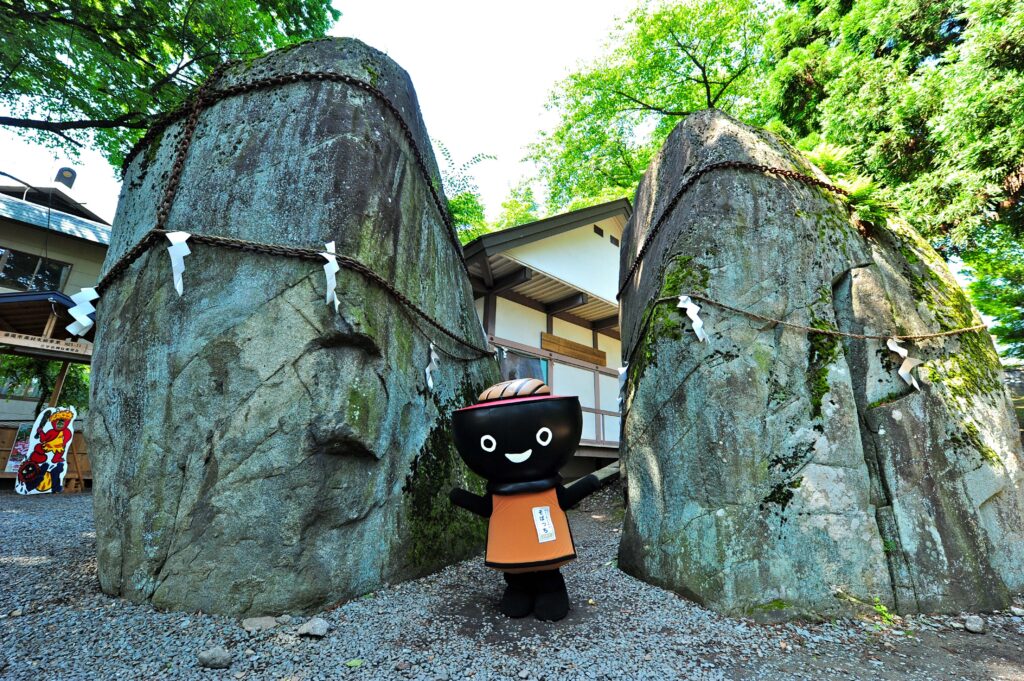
岩手県を代表する伝統工芸品の一つが南部鉄器です。昔から盛岡市と奥州市の2つ地域で製造されていますが、南部鉄器が誕生した歴史は異なっているそうです。
盛岡の鉄器は江戸時代に、この地域を治めていた南部藩主が京都や甲州(山梨県)から釜師を招いて茶の湯釜を作らせたのが始まりとされています。名称である「南部」は、南部藩に由来するそうです。
一方、奥州の鉄器は歴史が古く、平安時代末期、藤原清衡が近江国から鉄器職人を招き、武具などを作らせたのが始まりとされています。その後、農機具や日用品鋳物を中心に発展してきました。南部鉄器の名称で呼ばれるようになったのは、昭和30年からだそうです。
作品のモチーフとなった「鉄瓶」は、南部鉄器の代表的なアイテムです。鉄瓶で沸かしたお湯は、味がまろやかで、鉄分補給にも有効だといわれています。機能性も優れ、モダンなデザインが一生モノの道具として愛されています。最近では、現代的にアレンジされたデザインも発売されており、世界中から注目されているそうです。
Nambu ironware is one of the representative traditional crafts of Iwate Prefecture. Nambu ironware has been produced in Morioka City and Oshu City since ancient times, but the history of its birth is different.
Morioka’s ironware is said to have originated in the Edo period, when the lord of the Nanbu domain, who ruled the area, invited kettle makers from Kyoto and Koshu (Yamanashi Prefecture) to make tea ceremony kettles. The name “Nanbu” is said to have originated from the Nanbu domain.
On the other hand, Oshu’s ironware has a long history, dating back to the late Heian period (794-1185), when Fujiwara no Kiyohira invited ironware craftsmen from Omi Province to make armor. Since then, it has developed mainly into agricultural machinery and daily necessities castings. It is said that the name “Nambu ironware” came to be used in 1955.
The tetsubin (iron kettle), the motif of this work, is a typical Nambu ironware item. It is said that water boiled in an iron kettle has a mellow taste and is effective in replenishing iron. It is also highly functional, and its modern design is loved as a tool that will last a lifetime. Recently, modernized designs have been released, attracting attention from around the world.
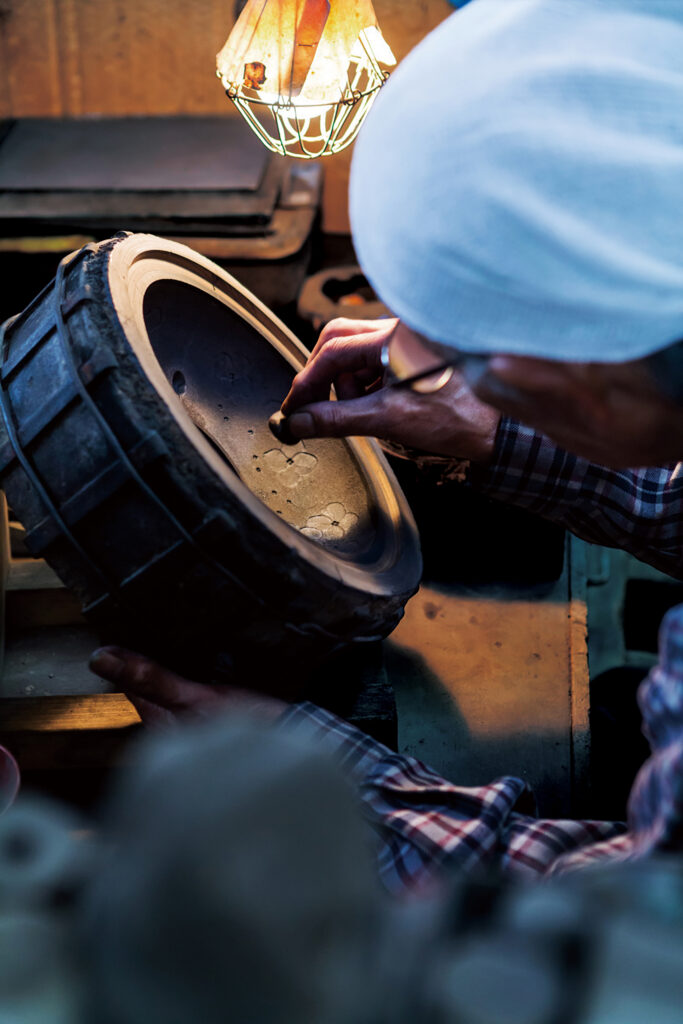
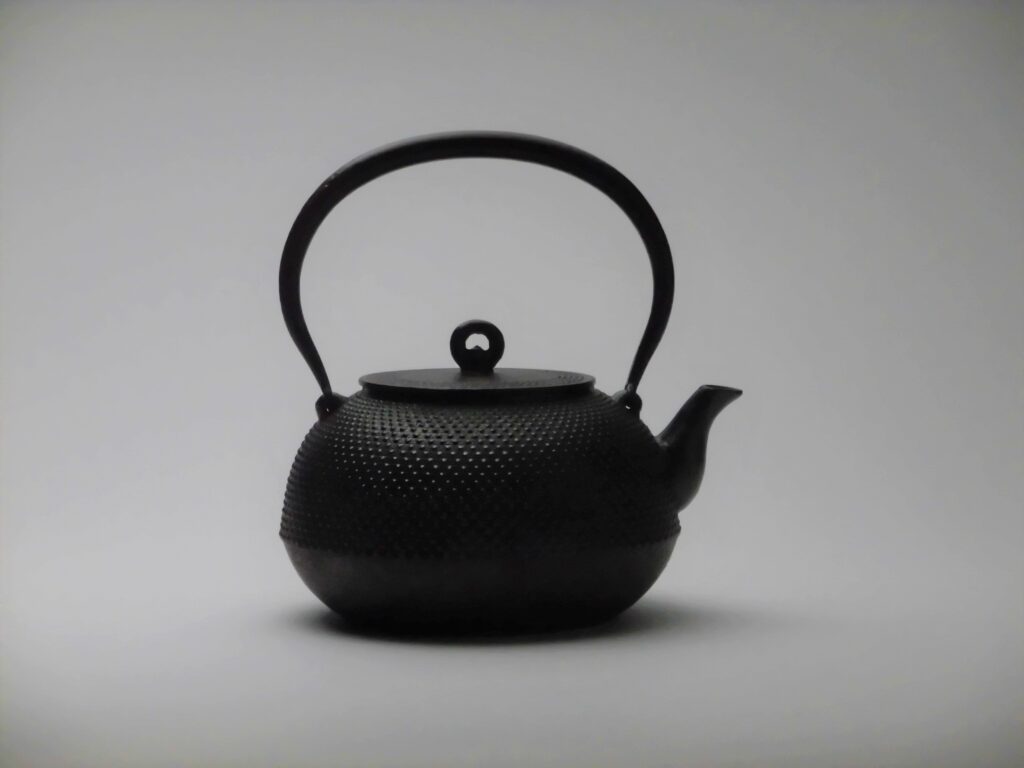
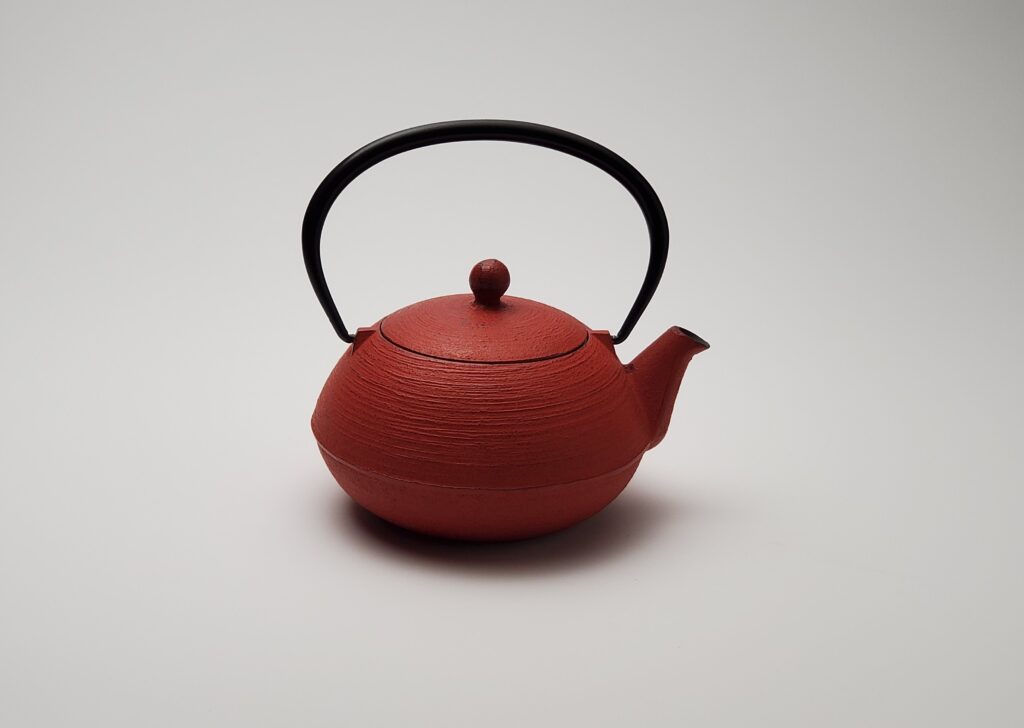
「岩手の子供たちに元気と笑顔を!」を合言葉に、東日本大震災があった2011年10月に誕生。右手は南部鉄器、右肩には南部鉄瓶をもつ岩手県のご当地特撮ヒーローです。
今年10周年となりシリーズ10作目「鉄神ガンライザー レジェンドヒーローズ」が放映されている。片桐仁は、2014年、2015年放映の「鉄神ガンライザー NEO」シリーズに出演していました。
With the slogan “Bring energy and smiles to the children of Iwate!”, Ganrizer was born in October 2011, the year of the Great East Japan Earthquake. He is a local special effects hero from Iwate Prefecture, with Nambu ironware in his right hand and a Nambu iron kettle on his right shoulder.
This year marks the tenth anniversary of the series, and the tenth in the series, “Tetsujin Ganrizer Legend Heroes,” is being aired. Jin Katagiri appeared in the series “Tetsujin Ganrizer NEO” aired in 2014 and 2015.
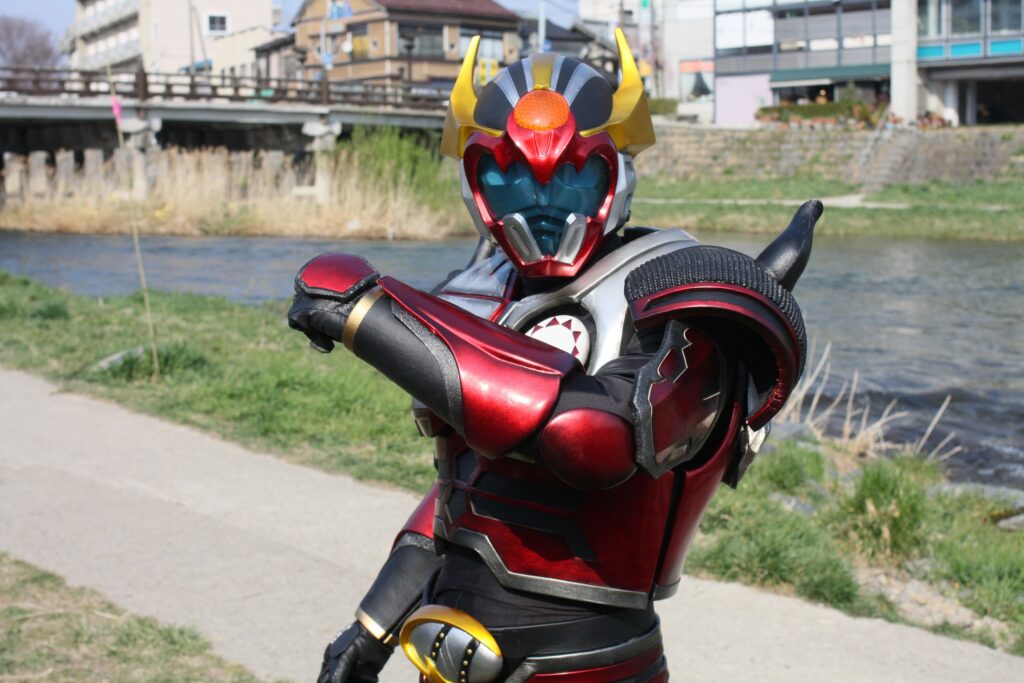
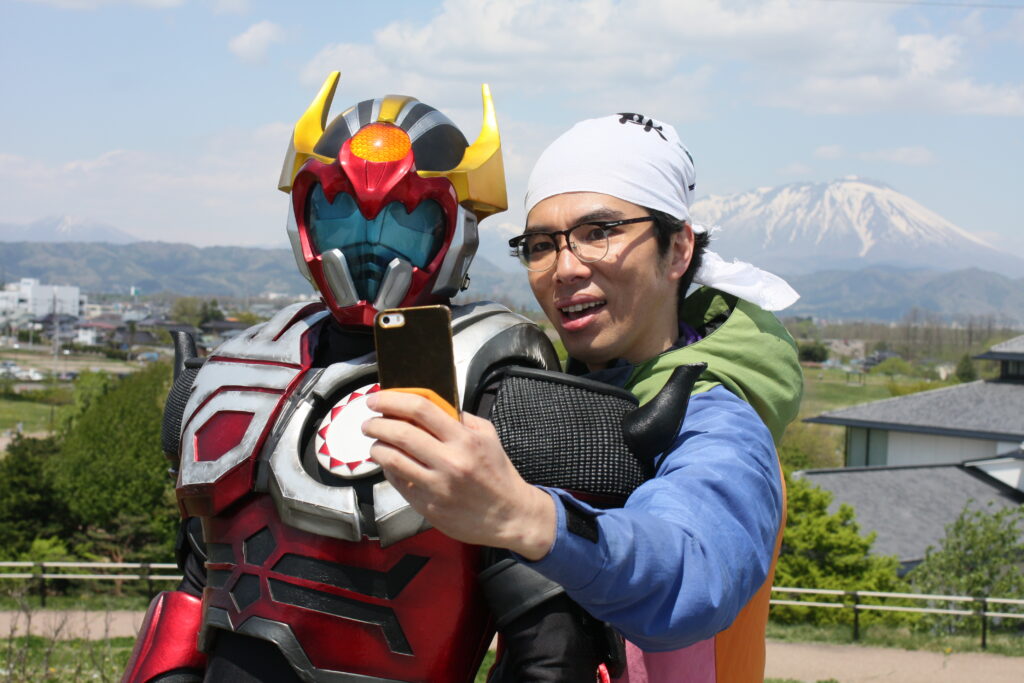
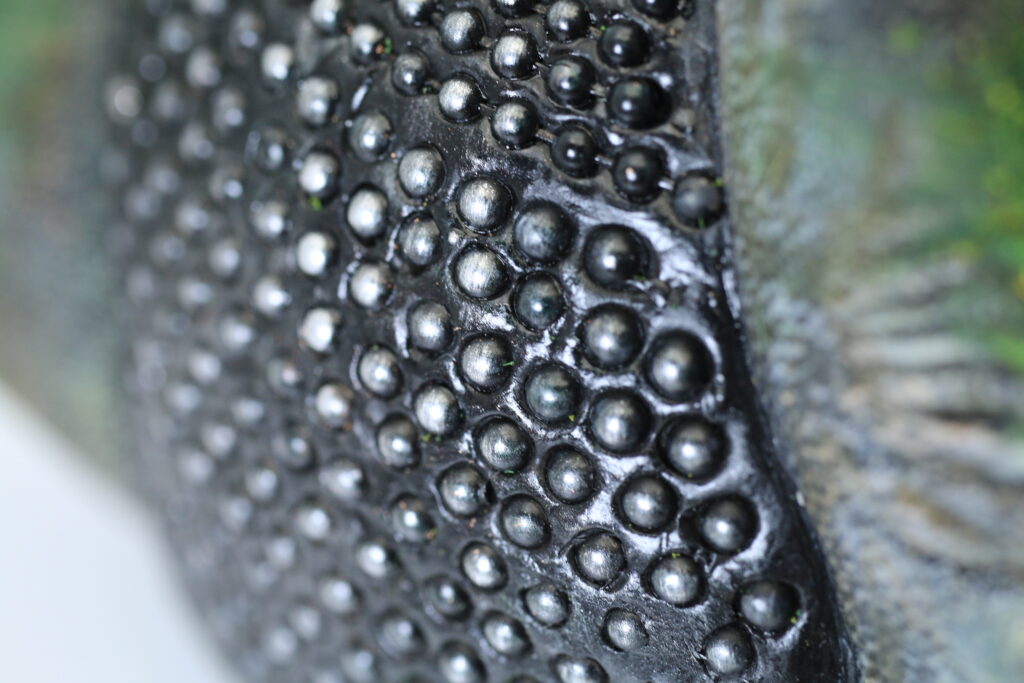
新作「岩手鉄瓶」のつぶつぶ(動体のあられ部分)を見た時、本物の南部鉄瓶に粘土を盛ったのだと思いました。ところが、キャプションを読んでみると蓋以外は片桐さんの手作りだと分かりびっくりです。片桐さんの作品の魅力は、360度どこから見ても楽しめるディテールや彩色だと思います。いつか、片桐さんの作品展世界ツアーを開催して実物を見てもらいたいです。
When I saw the dots (arare) on the new piece “Iwate Tetsubin”, I thought it was a real Nambu tetsubin with clay. However, when I read the caption, I was surprised to learn that everything except the lid was handmade by Mr. Katagiri. I think the charm of Ms. Katagiri’s works is the details and colors that can be enjoyed from any angle.
Someday, I would like to hold a world tour of Katagiri’s works and let people see the real thing.

文:THAT IS GOOD編集部 藤田
Text : THAT IS GOOD editorial department Fujita